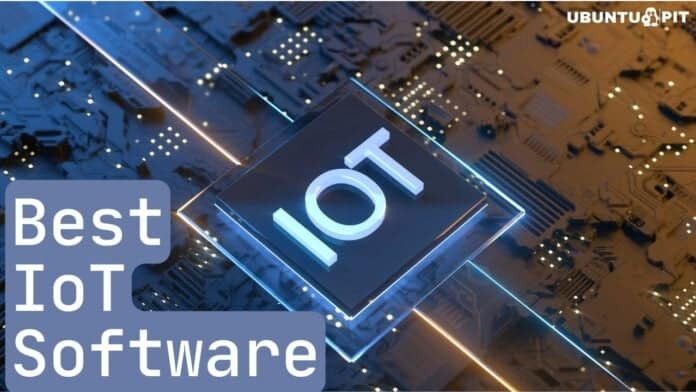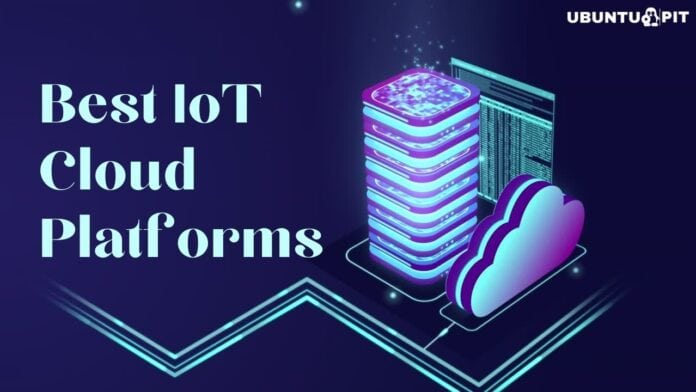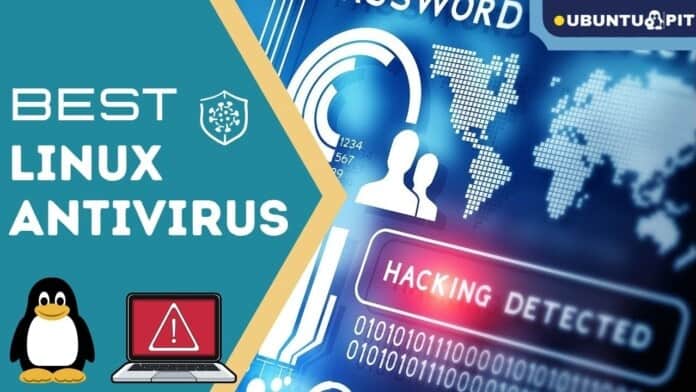No matter whether you’re a tech professional like a wannabe hobbyist or me, chances are you’ve heard the word IoT a thousand times. It stands for Internet of Things, a high-tech technology that allows almost every electronic circuit of your home to be used as a smart real-time platform. Using powerful embedded programming languages, you can develop innovative and awe-inspiring applications for your IoT platform of choice.
On the plus side, thanks to its day-to-day increasing traction in the industry, a consistent number of amazing iot software are available. Such modern-day IoT software aims to improve the development speed of your Internet of Things and provides an excellent tool for boosting productivity at the same time.
Best IoT Software and Solutions
Below, we’re presenting the 20 best iot software you can use in your project right now. Our picks have been based on emerging IoT trends. They should provide you with essential insights into some of the most popular software for developing cutting-edge IoT applications.
1. Arduino (IDE)
 It should not come as surprising to see an Arduino iot software topping this list. Being the de-facto IoT tool, you can find a large number of exciting IoT projects built with Arduino.
It should not come as surprising to see an Arduino iot software topping this list. Being the de-facto IoT tool, you can find a large number of exciting IoT projects built with Arduino.
The Arduino IDE is the go-to tool for developers when it comes to coding their innovative IoT projects. Whether you are a seasoned developer or a newbie looking to get your hands dirty with IoT, the Arduino IDE is the perfect tool to kickstart your IoT programming.
Highlights of the Arduino (IDE)
- Arduino IDE supports native microcontroller development using the C and C++ embedded programming languages.
- This cross-platform integrated development editor is written in Java, thus offering a performance matched by only a few.
- You can upload your codes on microcontrollers directly with Arduino IDE.
- It also offers a convenient web editor for those who don’t want to install a full-fledged editor in their system.
2. Windows IoT
Windows IoT is a popular operating system for embedded systems that allows for your IoT device’s convenient development and maintenance. It is based on the Windows family of operating systems and provides an excellent tool for maintaining your IoT components seamlessly.
Known previously as Windows Embedded, the Windows IoT OS has three distinct flavors: Enterprise, Mobile, and Core. This iot software is used heavily in industrial IoT devices that employ a lot of automotive processes.
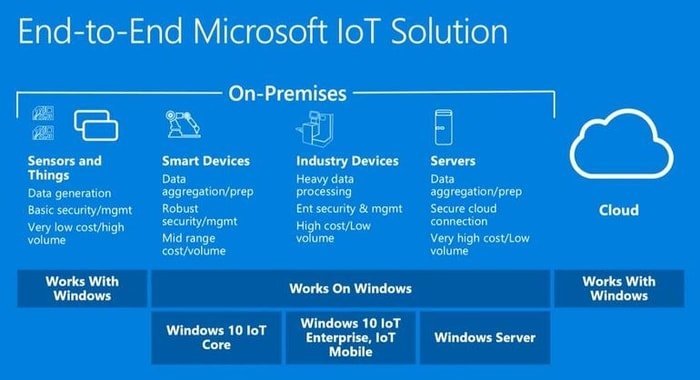
Highlights of the Windows IoT
- This IoT operating system is marketed for developing smart IoT devices that require a low memory footprint.
- Windows IoT is designed to boost the UWP app experience while providing a more accessible platform to develop such iot software.
- This embedded operating system gives developers access to a vast, established Windows ecosystem.
- Apps built on this OS can be easily integrated into cloud platforms like Azure.
3. Android Things
As smartphone users are on the rise every day, such devices have become a prominent ground for deploying new-generation IoT applications. Android, the de-facto smartphone operating system globally, provides a cutting-edge platform for developing awe-inspiring IoT systems.
Named Android Things, this IoT software provides a handy platform for IoT systems that require a considerably lower memory footprint while supporting numerous ARM-based architectures at the same time.
Highlights of the Android Things
- This system will support devices with meager resources and work perfectly even on systems with 32 MB of RAM.
- Android Things comes with ready use Low-frequency Bluetooth signal and built-in Wi-Fi.
- If you want to build modern IoT solutions that leverage the popular Google Assistant, consider this iot software your best choice.
Get it here
4. Microsoft Azure
Microsoft Azure is a distributed cloud computing platform that enables you to build, deploy, and test your next iot software solely on the cloud. It is used in the industry as a platform (PaaS) or infrastructure as a service (IaaS).
This means for your IoT to develop your IoT application to be totally machine-independent and use one of the services mentioned above to operate like the system itself. Since its general IoT availability was released, Microsoft Azure has enjoyed widespread popularity in the embedded systems community.
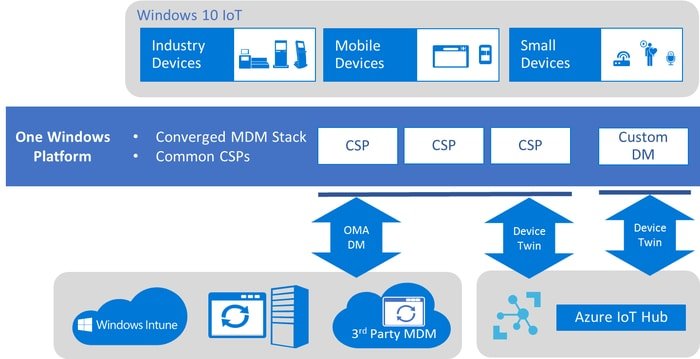
Highlights of the Microsoft Azure
- This cloud platform offers more than 100 pre-built convenient services for use readily in your next IoT project.
- Its robust data and analytics services make it suitable when it comes to building smart IoT systems.
- You can develop distributed blockchain solutions for your IoT with the help of Microsoft Azure.
5. MQTT
MQTT, an abbreviation for Message Queuing Telemetry Transport, is a messaging protocol that works on top of the TCP/IP protocol. It is the de-facto messaging protocol used in IoT for communicating with devices internally.
This iot software provides ISO standard IoT protocols for internal communication. It offers modern-day security measurements such as SSL and TSL to ensure the transmission is just as secure as those on full-fledged computing systems.
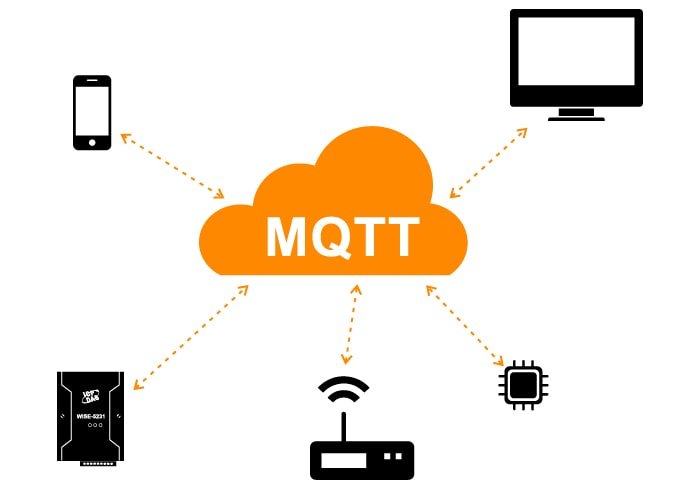
Highlights of the MQTT
- This messaging protocol leverages the publish-subscribe paradigm for effective network communications among everyday IoT devices.
- Because of its small size and low power usage, this application is perfectly suitable for IoT devices with heavy resource constraints.
- It is the de-facto medium of inter-communication for devices with minimal bandwidth access.
- It is widely used in home automation systems due to its lightweight design and small code footprint.
6. Raspbian
Raspbian is the most widely used operating system for Raspberry Pi. You can find a lot of exciting Raspberry Pi IoT projects that leverage this iot software. Due to its being a Unix-like system, Raspbian attracts many open-source enthusiasts who use it to develop awe-inspiring IoT projects. This IoT OS offers seminal performance even in systems with very few hardware resources.
Highlights of the Raspbian
- This Raspberry Pi operating system is based on the Debian systems and sits on top of a monolithic kernel.
- It is highly optimized for powering older-generation embedded systems that have access to only minimal resources.
- As it ships with a pre-loaded copy of Minecraft, it is widely used to power online Minecraft servers.
- It has a subtle resemblance to the popular Linux flavor LXDE.
7. MindSphere
MindSphere is an open cloud-based operating system platform for modern IoT devices. Developed by Siemens, this iot software allows everyday IoT devices to effectively collect and utilize cloud data and make intelligent decisions based on them.
This is behind the smart GPS systems you see on today’s flagship cars like those in Tesla. It acts as a PaaS (Platform As A Service), enabling developers to build cutting-edge smart IoT solutions.
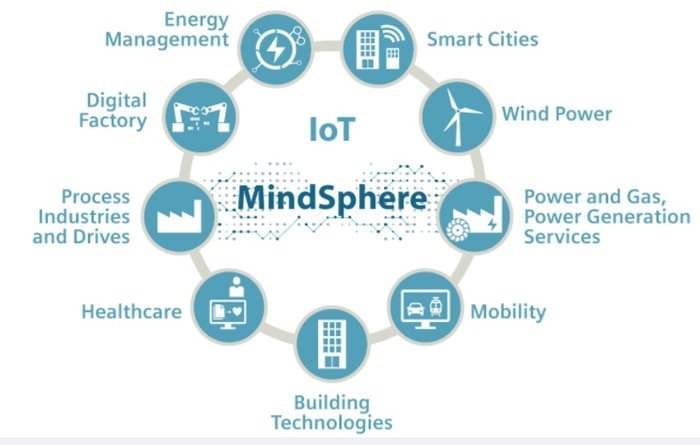
Highlights of the MindSphere
- This iot application is widely used to collect real-time telemetric and geographical data.
- It is the go-to solution when it comes to building automated production and vehicle management systems.
- You can connect your assets very securely by utilizing auxiliary MindSphere products like the MindConnect IoT2040 or MindConnect Nano.
- MindSphere provides a compelling set of application programming interfaces (APIs), allowing developers to integrate their IoT technology.
8. Azure Sphere
The Azure Sphere is also a product from software giant Microsoft. Although seemingly identical to the Microsoft Azure iot software, this operating system is based on the famous Linux kernel.
It was marketed by Microsoft to gain traction in the huge open-source Linux community and has since been enjoying worldwide success. Built for use with the ARM class of architectures, this platform combines all the functional elements of Microsoft Azure with a world-class Unix ecosystem.
Highlights of the Azure Sphere
- Like Unix-based embedded platforms, Azure Sphere is designed to develop powerful MCU-powered IoT devices.
- With this powerful IoT operating system, you will get the security provided by Unix-like systems.
- The Azure Sphere is designed in a way that you can leverage it for curating fast IoT applications and getting them on the market very quickly.
- You can get your hands on pre-built powerful developer toolkits to boost your IoT productivity even further with this fantastic IoT platform.
9. Thingspeak
Thingspeak is an IoT software that provides powerful APIs for storing and retrieving data within IoT devices over the HTTP protocol or through a LAN(Local Area Network). Written in the Ruby programming language, this cross-platform IoT application is suitable for IoT analytics systems that require data gathering from a range of devices – from industrial to economical.
If you’re looking for a powerful IoT application that works well with limited bandwidth, this is the best solution for your next IoT project.
Highlights of the Thingspeak
- Thingspeak allows developers to collect sensor data easily from their IoT devices.
- Thanks to its effective implementation of the Matlab application, developers can analyze their IoT data effectively with this application.
- You can program your IoT application to trigger certain logic based on the analysis provided by Thingspeak.
- The massive community of Thingspeak makes sure your developers won’t get stuck on a project by curating helpful documentation.
10. Node-RED
Node-RED is one of the best iot software that allows developers to wire together distinct flows by utilizing its powerful and convenient APIs and online services. Developed at IBM, this IoT tool enables you to visualize your data flow and curate practical design diagrams interactively.
The web browser provided by Node-RED can be utilized to create JavaScript functions on the go while allowing you to store your streams in JSON at the same time.
Highlights of the Node-RED
- It is an interactive visual tool that lets developers wire the different components of their IoT systems.
- Node-RED offers a convenient and rich dashboard with powerful flow management methods.
- You can get your hands on the powerful command-line tool Node generator that utilizes Node-RED node modules from several sources.
- With this productivity-increasing tool, you can directly deploy your flows to runtime via a single mouse click.
11. Predix
This is one of the best data analytics iot software you can use in your next IoT project. Developed by General Electric, Predix offers a convenient and easy solution for collecting and assessing your IoT data and helps predict essential steps for maximizing the real potential of your IoT system. It provides a cloud-based PaaS (platform as a service) to make asset performance management (APM) a breeze.
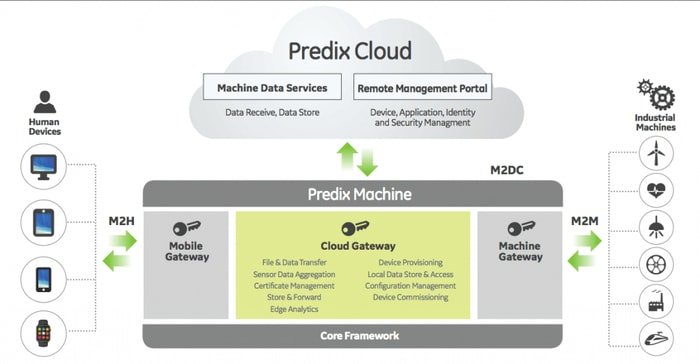
Highlights of the Predix
- Predix helps you connect your IoT machines, data, and analytics to assess your business potential effectively.
- This IoT tool helps you limit risk, append control, and enhance your IoT ecosystem’s visibility.
- The data management and analytics tool provided with Predix is potent and helps businesses determine how their IoT will gain more traction.
- It offers a cross-platform mobile SDK for better accessibility to your next-generation IoT projects.
Learn more
12. AllJoyn
AllJoyn is a flexible framework that allows a seamless communication medium for your smart IoT devices. This powerful yet collaborative iot software lives up to its hype and provides a core set of powerful application services that allow interoperability between connected IoT devices—thinking about building a smart light bulb that notifies when no one is in the room so it can be turned off? AllJoyn to the rescue!
Highlights of the AllJoyn
- Initiated by Qualcomm, AllJoyn utilizes dynamic proximal networks and a D-Bus message bus for intercommunication among different IoT devices.
- It employs a client-server model to organize and operate its base functions.
- The system offers powerful APIs that allow you to integrate them with existing IoT projects.
- With a robust and vast ecosystem of open source applications, AllJoyn is most suitable for those looking to get their hands dirty with home automation.
13. LiteOS
This real-time IoT operating system supports almost every ARM architecture and microcontroller. Developed by Huwaei, this mesmerizing iot software requires very few hardware resources while leaving a tiny memory footprint at the same time.
If your next IoT project requires a fast response, multiple sensor collaboration, and multiple protocols interconnect connectivity, we earnestly advise you to consider LiteOS.
Highlights of the LiteOS
- LiteOS has a BSD license, enabling developers to build powerful open-source IoT systems.
- This embedded operating system offers numerous development kits to quick-start your projects and supports over 50 development boards.
- It’s the most energy-efficient IoT operating system our experts could get their hands on.
- The whole software is high-speed and boots up within milliseconds.
14. dat
Marketed as a next-generation peer-to-peer web protocol, dat lives up to its mark of being the de-facto tool that will power future IoT projects. It increases the traction of open data movement and offers convenient means for overall better collaboration. This iot software is built for developers who employ decentralized workflows in their Internet of Things.
Highlights of the dat
- This open source iot software offers very powerful JavaScript APIs and a complimentary yet intuitive command-line tool.
- It can be used for IoT projects that deal with huge (billions!) data and need to manipulate them in real time.
- You can sync your data and flows automatically and update the entire data collection with this handy IoT tool.
15. Thingsquare Mist
Thingsquare Mist is an excellent IoT tool that does wireless mesh networking for your modern Internet of Things projects very easy and resilient at the same time. With its lightweight design and low system requirements, this versatile iot software is battle-proven and hailed in high regard within the open-source community.
Highlights of the Thingsquare Mist
- Thingsquare Mist comes with built-in support for multiple microcontrollers – ranging from Arduino to Particle Photon.
- Developers only require a single wireless chip to get started with this fantastic software.
- It is designed to be extremely energy-efficient and even works on systems that run on tiny batteries.
- Thingsquare Mist provides out-of-the-box support for the most readily available hardware.
16. RIOT
This is a modern-day lightweight operating system for the Internet of Things devices that aims at being very energy efficient yet practical at the same time. The microkernel-based design of this IoT operating system makes it especially lucrative to developers who want a stable but low-footprint operating platform for their devices.
Highlights of the RIOT
- This iot software is excellent for developing IoT solutions that require a very high level of modularity.
- It ships with native support for independent hardware development, making it perfect for being utilized in IoT projects that employ an Agile development paradigm.
- RIOT supports almost every microcontroller that employs either 32-bit, 16-bit, or 8-bit architecture schemes.
17. Tessel 2
If you’re an IoT developer with a keen interest in robotics, you might find this your favorite IoT software. This eclectic IoT platform leverages the power of Node.Js and offers a convenient means to design and build futuristic robotic projects. From adding sensors to utilizing peripherals, Tessel 2 covers every imminent aspect of modern-day robotics.
Highlights of the Tessel 2
- Tessel 2 offers a plug-and-play ecosystem, which makes it the fastest software for prototyping robotics projects.
- Apart from numerous helpful open-source modules comes with ten default pin modules – covering from Accelerometer to Infrared.
- Tessel 2 comes with built-in Wireless and Ethernet connectivity.
Get it here
18. Arm Mbed
 Arm Mbed is a popular launching platform for IoT devices with particular emphasis on a centralized device-to-data platform. It aims at empowering developers to create an intelligent Internet of Things enterprise.
Arm Mbed is a popular launching platform for IoT devices with particular emphasis on a centralized device-to-data platform. It aims at empowering developers to create an intelligent Internet of Things enterprise.
With this excellent iot software, you will get a powerful operating system for your next project and the gateway, device management services, and a partner ecosystem that will enhance your productivity and reduce the time required for hitting the market.
Highlights of the Arm Mbed
- The powerful pre-built applications in Arm Mbed make sure you need the least possible time for curating a working version of your IoT projects.
- Arm Mbed’s powerful and flexible APIs make managing devices a sound breeze.
- It enables you to create efficient IoT solutions on top of Arm Cortex-M microcontrollers and provides essential means for security, connectivity, RTOS, and sensor drivers.
19. OpenRemote
One of the best middleware iot software you can utilize in your next project is OpenRemote. This is a general-purpose IoT backend that is consisted of three primary components – each with different goals. You get a designer to design the system, a controller that acts as the brain and manipulates devices, and a console that gives access to a graphical interface.
Highlights of the OpenRemote
- With its out-of-the-box support for numerous automation protocols, OpenRemote takes care of efficiency, as it claims.
- This is an excellent mechanism for developing powerful NAS file servers that require complex backends.
- The OpenRemote console comes in different flavors – from iOS and Android to an intuitive Web console.
20. ROS (Robot Operating System)
As robotics is at the center of most cutting-edge IoT discussions, it’s no wonder a large number of powerful IoT software are solely dedicated to this innovative engineering field.
ROS is a mighty full-fledged Robot Operating System with a compelling set of software libraries and tools for increasing productivity. With this great Robot Operating System, you can easily get around even the most complex robotics project.
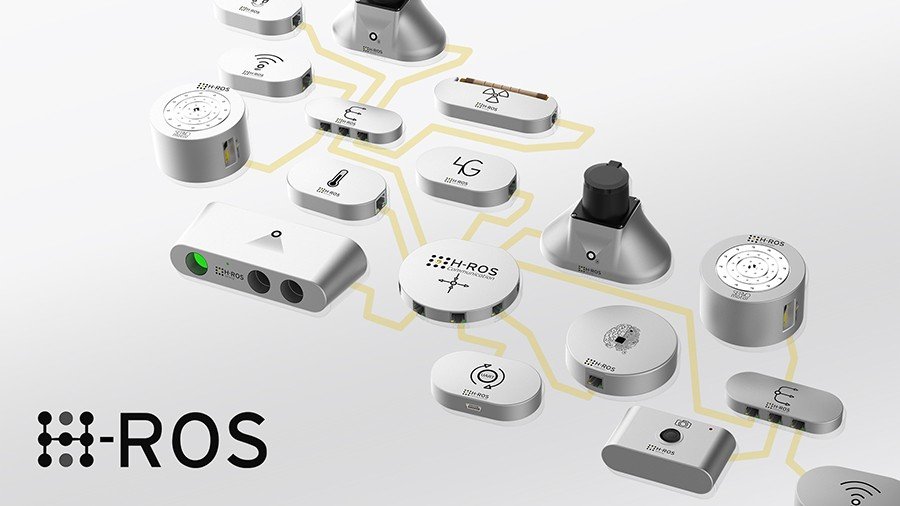
Highlights of the ROS
- ROS focuses heavily on a modular developing paradigm and employs powerful abstractions to achieve its goal.
- It ships with out-of-the-box support for device drivers, libraries, visualizers, package management, and communication protocols.
- Its employment of the BSD license over a GNU license makes it suitable for developers looking to create proprietary iot software with open-source technologies.
Get it here
Ending Thoughts
The IoT industry is ever-growing technology that is evolving each day. With the constant decrease in resource costs and increasing release of useful iot software, this field will continue to rise in the upcoming years.
Our experts have curated this well-thought guide to provide the essential insights required when creating mesmerizing next-generation IoT projects. We encourage you to try each software in different situations and discover its potential through hands-on experience.
